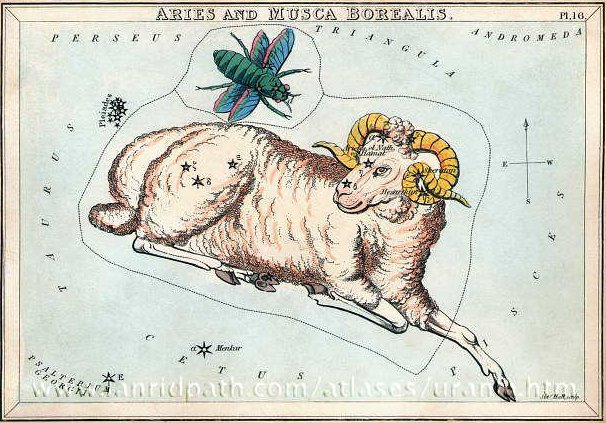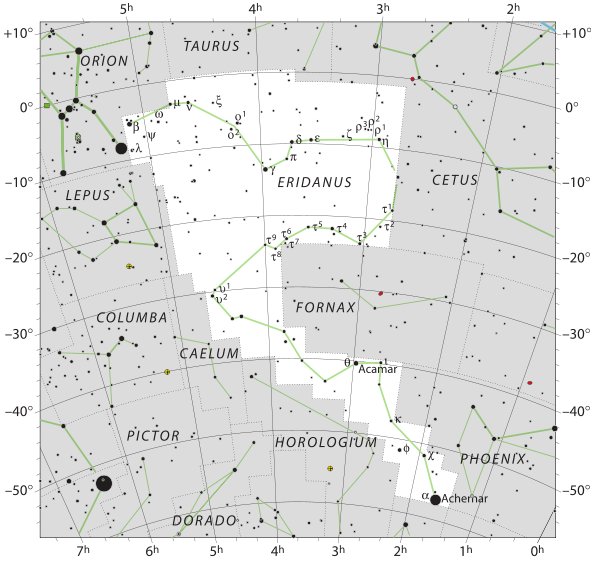Right
ascension 2h coincides with a
raaraa (no Sun, raa) type
of glyph:
|
Almuqaddam 10 |
11 (700) |
12 (336) |
|
April 15 |
16 (471) |
17 (107) |
 |
 |
 |
|
Ca1-25 |
Ca1-26 |
Ca2-1 (27) |
|
kiore
ki te huaga |
kua
moe ki te tai. |
Te
heke |
|
|
|
Benetnash (208.5) |
|
Polaris (26.6) |
|
13 |
Al Muakhar 1 |
2 |
3 |
4 |
|
April 18 |
19 |
20 |
21 (*31) |
22 |
 |
 |
 |
 |
 |
|
Ca2-2 |
Ca2-3 |
Ca2-4 (30) |
Ca2-5 |
Ca2-6 |
|
erua tagata |
te
henua |
tagata
oho ki
tona huaga |
kua
oho |
|
|
2h (30.4) |
|
|
|
Raa
Sun; day;
i te raá nei,
today; raá îka,
good day for fishing.
Vanaga.
1.
Sun. 2. Day. 3. Time. 4.
Name of sub-tribe.
Fischer.
Te
manu i te raá
= comet.
Barthel.
'... The
substitution of the sun
for the sail, both of
which are called ra
or raa in
Polynesia, is a
remarkable feature in
Easter Island art ... '
Heyerdahl 3.
1. The
sun;
raa ea mai,
raa puneki,
sunrise;
raa tini,
raa toa,
noon. P Mgv., Ta.:
ra, the
sun. Mq.:
a, id. 2.
Day, date;
a raa nei a,
to-day, now;
raa i mua,
day before. P Mgv., Ta.:
ra, a day.
Mq.:
a, id.
Churchill.
'... The chief thus
makes his appearance at
Lakeba from the
sea, as a stranger to
the land. Disembarking
at the capital village
of Tubou, he is
led first to the chiefly
house (vale levu)
and next day to
the central ceremonial
ground (raaraa)
of the island
...' (Islands of
History)
Ta.: toraaraa,
to raise up. Churchill
2. |
The manzil Al
Muakhar is ruled by Pollux and
possibly this explains why we
can see erua tagata (two
persons). The one in Ca2-2 could
represent Castor, the earlier
and mortal of the Twins. He has
4 (bad luck) fingers which are
spreading out (as life does) and
2 of them are closing to form
ihe tau.
 |
 |
|
Ca2-2 |
ihe tau |
 |
 |
 |
 |
 |
|
Ka3-6 |
Ka3-7 |
Ka3-8 |
Ka3-9 |
Ka3-10 |
|
Aludra (111.1) |
Gomeisa (111.6), ρ
Gemini (112.1) |
Castor (113.4) |
|
Markab Puppis
(114.7), Procyon
(114.9) |
|
July 10 |
11 |
12 (193) |
13 |
14 |
|
Heka 2 |
3 |
4 |
5 |
6 (59) |
 |
 |
 |
 |
|
Ka3-11 (52) |
Ka3-12 |
Ka3-13 |
Ka3-14 |
|
σ Gemini (115.7),
Pollux (116.2) |
Azmidiske (117.4) |
|
|
|
July 15 |
16 |
17 |
18 |
|
Heka 7 |
8 |
9 |
10 |
Metoro said
oho 5 times when reading
line Ca2.
|
Oho
1. To go:
ka-oho! go! go
away! (i.e. 'goodbye'
said by the person
staying behind);
ka-oho-mai (very
often contracted to:
koho-mai), welcome!
(lit.: come here);
ku-oho-á te tagata,
the man has gone.
Ohoga, travel,
direction of a journey;
ohoga-mai,
return. 2. Also
rauoho, hair.
Vanaga.
1. To
delegate; rava oho,
to root. 2. To go, to
keep on going, to walk,
to depart, to retire;
ka oho, begone,
good-bye; oho amua,
to preced; oho mai,
to come, to bring;
oho arurua, to sail
as consorts; hakaoho,
to send, a messenger. 3.
Tehe oho te ikapotu,
to abut, adjoin; mei
nei tehe i oho mai ai
inei te ikapotu, as
far as, to; kai oho,
to abstain, to forego;
hakaoho, to put
on the brakes. 4. The
head (only in the
composite rauoho,
hair). Churchill. |
The person in
Ca2-6 indeed is departing (oho) into the past
(to the left). In the
preceding Ca2-5 the word tona
is used:
|
Toona
Toona,
his, her. Vanaga.
Tona,
toona, his.
Churchill. |
What does it
mean? Oho ki tona huaga?
To return to his offspring? I
remember from Popol Vuh:
.. And then
she looked in her hand, she
inspected it right away, but
the bone's saliva wasn't in
her hand. It is just a sign
I have given you, my saliva,
my spittle. This, my head,
has nothing on it - just
bone, nothing of meat. It's
just the same with the head
of a great lord: it's just
the flesh that makes his
face look good. And when he
dies, people get frightened
by his bones. After that,
his son is like his saliva,
his spittle, in his being,
whether it be the son of a
lord or the son of a
craftsman, an orator. The
father does not disappear,
but goes on being fulfilled.
Neither dimmed nor destroyed
is the face of a lord, a
warrior, craftsman, an
orator.
Could tagata oho
ki tona huaga possibly be translated as
'the man will return in his
son'. Ki can mean in.
And an apple is seldom found
far from the tree.
|
Ki
Ki. To,
towards (a
place, a
person); after
(time); for, in
order to ...
Vanaga.
Kî. To
say, to speak;
word, language;
will, wish
(verbally
expressed):
e-hakarogo koe
ki te kî o toou
matu'a, obey
you father's
will. Vanaga.
1. In, toward,
to, for, at;
ki ra,
there; ki ra
hoki,
exactly there;
ki aho,
outside; ki
roto,
within, into,
inside, among.
2. In order
that. 3. To say,
to speak, to
chat, to
pronounce, to
respond;
argument,
conversation,
description,
doctrine,
expression,
word, relation;
ki veveveve,
voluble; ki
vaiapuga,
nonsense, to
speak much and
say nothing;
ki ihoiho,
to speak
forcefully.
Churchill. |
Metoro's
ki could alternatively
be kî, to speak. Tagata
oho kî
tona huaga - the man
(tagata) says (kî)
go away (oho) to his
offspring.
But neither of
these ideas seems to correspond to
what the glyph says. And
huaga is a mystery, perhaps
it is not equal to hua-ga as
I previously thought. Ca1-25 and
Ca2-5 are basically similar:
|
Almuqaddam 10 |
5 |
Al Muakhar
3 |
|
April 15 |
21 |
 |
 |
|
Ca1-25 |
Ca2-5 (31) |
|
kiore
ki te
huaga |
tagata
oho ki
tona
huaga |
In Ca1-25 I
saw 'the creation of a new
shell':
... Becoming aware at last
of his own existence and
oppressed by a yearning
loneliness Ta'aroa
broke open his shell and,
looking out, beheld the
black limitless expanse of
empty space. Hopefully, he
shouted, but no voice
answered him. He was alone
in the vast cosmos. Within
the broken Rumia he
grew a new shell to shut out
the primeval void.
Maybe
huaga is short for
hua-aga,
creating a (new shell) the
same, hua,
as before:
|
Aga
Work;
to work, to make, to
build, to create:
O te atua
i-aga-ai i te ragi,
i te henua. God
made heaven and
earth.
Vanaga.
Agahuru (hagahuru,
hagauru).
Agai (hagai).
Agatahi (aga-tahi)
one, (hagatahi);
agatahi ahi atu,
day before
yesterday;
hagatahi ahi,
yesterday.
Churchill. |
|
Hua
1.
Testicle. 2.
Figuratively: son,
hua tahi,
only son; fruits of
the earth; to grow
well (of fruits). 3.
To cause a fight, a
quarrel. Hua-ai,
generation, as
lineage of direct
descendents;
contemporaries. Huahua, coccyx of bird, 'parson's nose':
huahua moa,
huahua uha.
Huataru, a
creeper (Chenopodium
ambiguum).
Vanaga.
1.
The same; ki hua,
again, to continue,
to strain, to
struggle, to move,
to repeat, over and
above. Mq.:
hua, the
same, to return, to
recommence.
2. To bloom, to
sprout; flower,
fruit (huaa);
huaa tae
oko, huaa vahio,
young fruit; hua
atahi, only son;
huahaga,
fruit; mei te
huahaga o tokoe kopu,
the fruit of thy
body; tikea
huahaga,
deceptive
appearance. P Pau.:
ua, to be
born; huahaga,
lineage. Mgv.:
hua, to produce
(said of trees,
grain, etc.),
blooming time of
flowers, abundance
of fruit. Mq.:
hua, to produce,
to bear fruit. Ta.:
ua, to
sprout. Huahua.
1. Tailless fowl. 2.
Vein, tendon, line.
3. Mgv.: huahua,
pimples covering the
face. Ta.: huahua,
id. Mq.: hua,
tubercules. Sa.:
fuafua, abscess
on hand or feet.
Ma.: huahua,
small pimples. Pau.:
Hua-gakau,
rupture. Ta.: áau,
entrails. Sa.:
ga'au, id. Ma.:
ngakau, id.
Churchill.
1.
Fruit. 2. Egg. 3.
Tā
hua =
'genealogical
writing' or 'same
writing'. Fischer. |
Offspring (hua) is a
reassuring symbol for the
eternal return of the cycle
of time, when all will be as
before:
... 'The earth rises up from
the sea again, and is green
and beautiful and things
grow without sowing. Vidar
and Vali are alive, for
neither the sea nor the
flames of Surt have hurt
them and they dwell on the
Eddyfield, where once stood
Asgard. There come also the
sons of Thor, Modi and
Magni, and bring along his
hammer. There come also
Balder and Hoder from the
other world. All sit down
and converse together. They
rehearse their runes and
talk of events of old days.
Then they find in the grass
the golden tablets that the
Aesir once played with.
Two children of men will
also be found safe from the
great flames of Surt. Their
names, Lif and Lifthrasir,
and they feed on the morning
dew and from this human pair
will come a great population
which will fill the earth.
And strange to say, the sun,
before being devoured by
Fenrir, will have borne a
daughter, no less beautiful
and going the same ways as
her mother.'
Kiore
ki te huaga could be
the 'Rat' (kiore)
speaks (kî) to the
(new) 'shell' (huaga).
The sitting figure has his
mouth open.
Tagata
oho ki
tona huaga could be
'the man (tagata) who
is departing (oho)
speaks to his creation (huaga)'.
We could try with the stars:
|
Almuqaddam 10 |
5 |
Al Muakhar
3 |
|
April 15 |
21 |
 |
 |
|
Ca1-25 |
Ca2-5 (31) |
|
kiore
ki te huaga |
tagata
oho ki
tona huaga |
|
Achernar (23.3) |
Hamal (30.5) |
There is a
'horn' at top left in
the 'eye' hanging in
front in Ca2-5, and Achernar
is far down south. But the
RA values are slightly too
low.

The 'first
point of Aries' is a
old standard expression for 0h:
...
Right ascension is the
celestial equivalent of
terrestrial longitude. Both
right ascension and
longitude measure an angle
that increases toward the
east as measured from a zero
point on an equator. For
longitude, the zero point is
the Prime Meridian on the
geographic equator; for
right ascension, the zero
point is known as the first
point of Aries, which is the
place in the sky where the
Sun crosses the celestial
equator at the March
equinox.
and Achernar is at the very
bottom of Eridanus:

|













